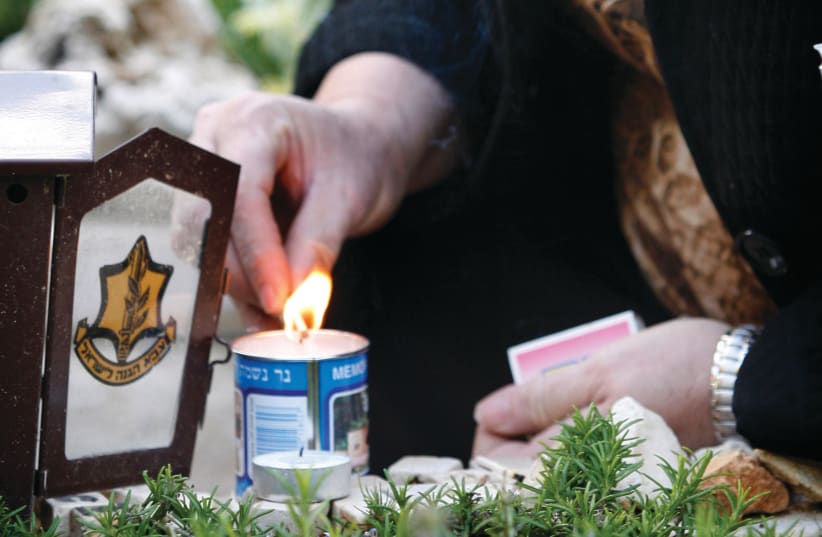In this week’s parasha, Moses loses his two siblings, Miriam and Aaron: “In the first month the whole Israelite community arrived at the Desert of Zin, and they stayed at Kadesh. There Miriam died and was buried.” (Num 20:1)
“Moses did as the Lord commanded: They went up Mount Hor in the sight of the whole community. Moses removed Aaron’s garments and put them on his son Eleazar. And Aaron died there on top of the mountain. Then Moses and Eleazar came down from the mountain, and when the whole community learned that Aaron had died, all the Israelites mourned for him for thirty days.” (Num 20: 27-29)
Two differences are noted. Aaron’s death was anticipated and so we are given more information, while Miriam’s death appeared to be sudden and hence less information. In addition, there is a glaring difference between how the people reacted to their deaths. Miriam dies and is buried, while Aaron is mourned for 30 days.
Why was Miriam's death not mourned as much as Aaron's death?
Responding to those discrepancies, Cantor Kathryn Wolfe Sebo writes: “Why the extreme differences in mourning these two leaders? Did Moses regret not properly mourning Miriam’s death? Perhaps striking the rock was an expression of frustration and sadness at the death of his sister rather than a lack of faith in God. (Shortly after Miriam’s death is the incident of Moses’ striking the rock instead of talking to it as God had commanded him (Num 20:8)) Miriam, Moses and Aaron are partners in this epic journey of wandering and discovery.
“As Moses stands at the rock, ready to strike, perhaps he recalls the sister who guarded him as he drifted through the Nile and who co-led with him in the desert. The extensive mourning for Aaron may be an expression of regret by Moses for not publicly recognizing Miriam’s death. Like Moses, may we all continue to learn from those mistakes, which touch hearts most deeply.”
Rabbi Miriam Berger adds: “However, perhaps it’s the mourning of Miriam to which we should all aspire. Immediately her loss is expressed by her absence in people’s lives. Torah expresses it as ‘thirst.’ She was a leader who nourished people and her absence made them feel lacking in life-giving waters. When we mourn, recognizing the legacy someone leaves and the absence felt in our lives is showing greater respect than all the public displays of grief ever could.”
Rabbi Berger is referencing the line immediately following the death of Miriam which states, “Now there was no water for the community” (Num. 20:2). Connecting those two moments, one right after the other, led to the idea of Miriam’s Well which accompanied the Children of Israel: “When Miriam died the well disappeared, as it is stated: ‘And Miriam died there’ (Numbers 20:1), and it says thereafter: ‘And there was no water for the congregation’ (Numbers 20:2)” (Ta’anit 9a).
“The well of Miriam which traveled with the Israelites through the desert during all those years… became the Israelites’ constant companion at least until the death of Miriam” (Rabbeinu Bahya, Exodus 17:6:1).
“It [the well] resembled a rock the size of a beehive, from which, as out of a narrow-necked jug, water coming out in a trickle shot high up in the air like a geyser. The well rolled up mountains with [the people of] Israel and went down into valleys with them. Indeed, whenever Israel encamped, the well rested close by on an elevated spot opposite the entrance to the Tent of Meeting” (Tosefta Sukkah 3:11-13; Numbers Rabbah 1:2).
THE 30 DAYS of mourning for Aaron here and the 30 days of mourning for Moses (Deut 34:8) are the basis for shloshim, the first 30 days immediately after burial. During this period, certain mourning practices are observed, including the first week of mourning called shivah, which contains additional mourning etiquette. In Israel, the gravestone is usually dedicated on the 30th day.
Rabbi Yaakov Goldstein points out there are many customs surrounding when that is done: “Various customs exist regarding when the matzevah [headstone] is to be erected. Some hold it is to be done immediately after the completion of shiva. Others hold it is to be done at the completion of shloshim. Others hold it is to be done after the first 12 months. Practically, the Chabad custom is to erect the matzevah on the 8th day after the burial, which is the day after Shiva.”
We learn to erect a headstone/matzevah from this earlier passage in the Torah: “Thus Rachel died. She was buried on the road to Ephrath – now Bethlehem. Over her grave Jacob set up a pillar; it is the pillar at Rachel’s grave to this day” (Gen. 35:19-20).
At the end of the day, we gently cover a child with blankets as we tuck them in. At the end of a person’s life, the last act we do for them, the last act of gemilut hasadim (loving kindness) is to cover their coffin with the soil of Mother Earth.
Sometime in the night, we go back into the child’s room and check that all is in place as we rearrange their pillow and blankets. Sometime after a person has died, we return to their grave to unveil their tombstone – the pillow of their grave.
As at the funeral, memories about the person who has died are often shared as part of the unveiling ceremony. This passage from The Web and the Rock by Thomas Wolfe can be used as a guide giving us perspective:
“The words are the same as the Sunday School teacher might use, but the feeling behind them is different, and that makes the difference. Therefore they express what Dostoevsky wanted them to.
“Alyosha tells the children that we must love one another, and we believe him. He tells them never to forget their comrade who has died, to try to remember all the countless good and generous acts of his life, his love for his father, his courage and his devotion.
“Then Alyosha tells the children that the most important thing in life, the thing that will expiate our sins, pardon all our mistakes and errors, make our lives prevail, is to have a good memory of someone. And these simple words move us more than the most elaborate rhetoric could do, because suddenly we know we have been told something true and everlasting about life.”
Like a well located under the shade of palm trees in a desert oasis, our good memories of someone from our lives can be refreshing and life-sustaining.■
The writer, a Reconstructionist rabbi, is the rabbi emeritus of the Israel Congregation in Manchester Center, Vermont. He teaches at the Arava Institute for Environmental Studies at Kibbutz Ketura and at Bennington College.

